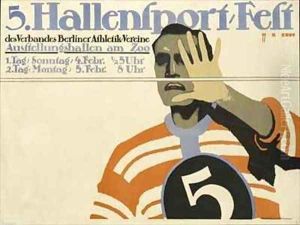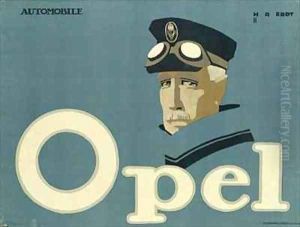Hans Rudi Erdt Paintings
Hans Rudi Erdt was a prominent German graphic artist, lithographer, and poster designer, born in 1883 in Benediktbeuern, Bavaria. He is especially renowned for his pioneering contributions to the field of advertising art in the early 20th century, particularly during the period leading up to and including World War I. Erdt's work is characterized by its vibrant colors, innovative graphic solutions, and often, a touch of humor, which made it stand out in the burgeoning field of commercial art of his time. Erdt was educated in Munich, where he was initially influenced by the Jugendstil movement, the German variant of Art Nouveau. His early career saw him designing posters for a variety of products, ranging from pharmaceuticals to bicycles, showcasing his versatility and keen eye for design. Erdt's talent quickly garnered attention, leading to commissions from major companies and organizations. Among his most famous works are his propaganda posters during World War I, which are notable for their persuasive imagery and emotional impact. Despite his promising career, Hans Rudi Erdt's life was cut short when he died in 1918, at the age of 35. His contributions, however, have left an indelible mark on the world of graphic design, influencing generations of artists and designers. Erdt's innovative approach to advertising and poster design not only reflected the aesthetic and social currents of his time but also paved the way for modern advertising techniques. Today, his work is celebrated for its historical significance and artistic merit, residing in the collections of major museums and galleries around the world.








